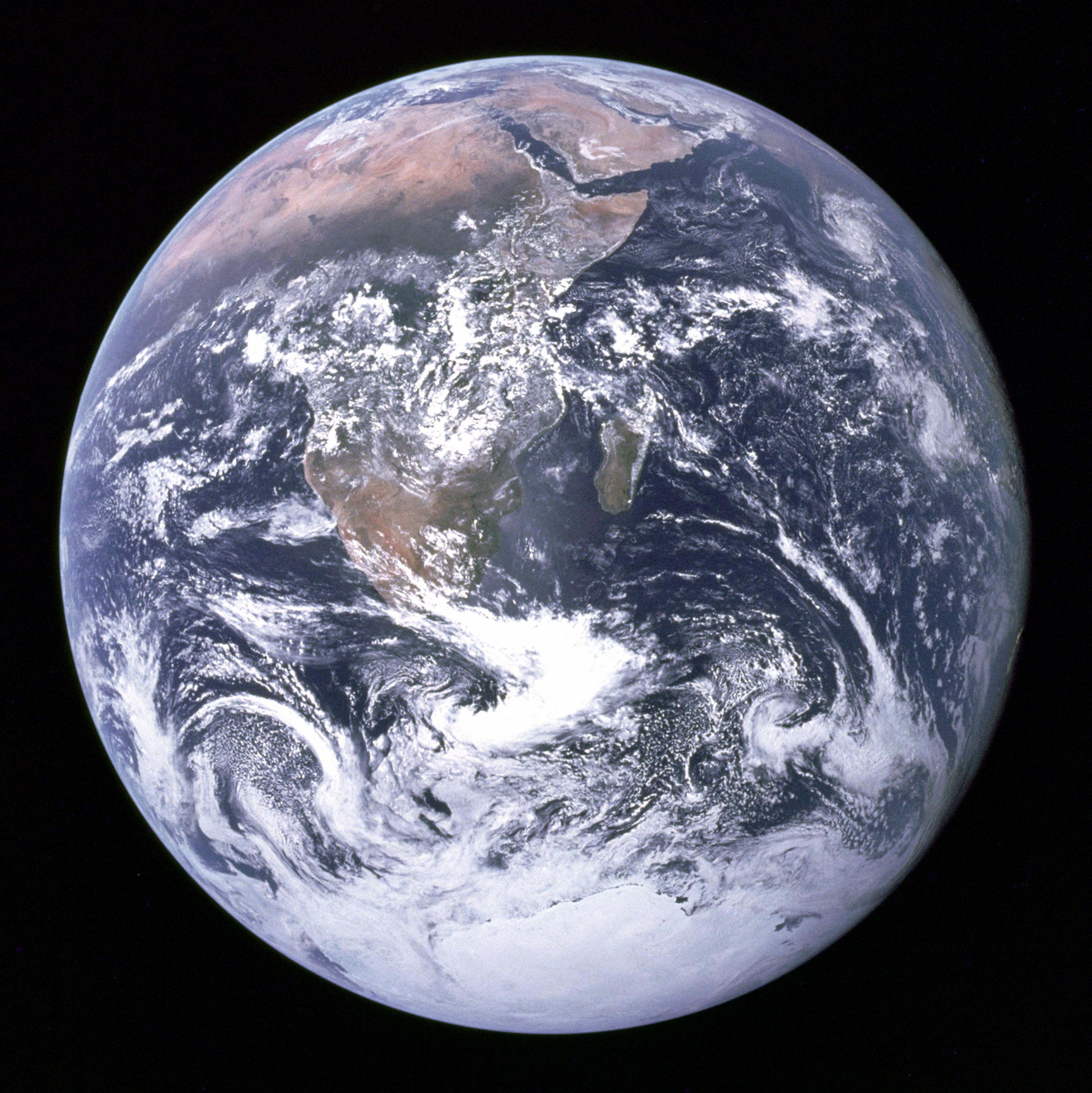Hello, everybody! We have finally hit this point - the point where I talk about our planet… planet Earth!
 |
| This is the famous photograph of our planet, The Blue Marble. It was taken by the crew of Apollo 17 in 1972. |
Facts about Earth
Average temperature: 15 °C
Average distance from Sun: 150 million km [accurately 149,598,023 km]
Year length: 1 year [accurately 365.256363004 days]
Solar day length: 1 day/86,400 seconds [accurately 86,400.002 seconds]
Solar day length: 1 day/86,400 seconds [accurately 86,400.002 seconds]
Surface area: 510,072,00 km [70.8% water, 29.2% land]
Gravity: 9.802 m/s [1 g]
Mass: 5.972 septillion kg [5,972,370,000,000,000,000,000,000 kg]
Surface pressure: 101.325 kPa [kilopascals]
Out of the four inner planets (those closer than the asteroid belt), Earth is the largest and heaviest. Also, it supports life. That makes Earth unique - because out of all planets we know of, Earth is the only one with the right conditions to support life.
On the surface is Earth's crust, which is divided into roughly sixteen plates that slide around on the next layer down, the mantle. The crust is where life makes its home on this planet - 71% of the surface is covered by water, while the remaining 29% is covered by the seven continents.
The mantle is mostly solid but flowing at the top and plastic near the bottom… though that does simplify it greatly, this still describes the rough composition of the mantle. Its top - the asthenosphere - carries the tectonic plates along and makes them collide or pull apart.
Below the mantle is the outer core. Here, liquid metals flow in complicated patterns and create a magnetic field that protects the Earth from dangerous particles originating in space.
And finally, below the outer core is the inner core. It just sits there, not doing much apart from growing about thirty-six times slower than a fingernail. It's also about the temperature of the surface of the Sun. …Slightly painful, then.
Our planet, for the last 500 million years, has been covered with plants that form vast forests in some p[laces - or grasslands in others. But the most distinctive feature is the water covering our planet's surface. That alone has given Earth the nickname of the 'Blue Planet'…
…even though Neptune is far more deserving of that name!
Out of the four inner planets (those closer than the asteroid belt), Earth is the largest and heaviest. Also, it supports life. That makes Earth unique - because out of all planets we know of, Earth is the only one with the right conditions to support life.
 |
| A 'cutout' of Earth's interior. My source is, as always, Wikipedia. |
The mantle is mostly solid but flowing at the top and plastic near the bottom… though that does simplify it greatly, this still describes the rough composition of the mantle. Its top - the asthenosphere - carries the tectonic plates along and makes them collide or pull apart.
Below the mantle is the outer core. Here, liquid metals flow in complicated patterns and create a magnetic field that protects the Earth from dangerous particles originating in space.
And finally, below the outer core is the inner core. It just sits there, not doing much apart from growing about thirty-six times slower than a fingernail. It's also about the temperature of the surface of the Sun. …Slightly painful, then.
Our planet, for the last 500 million years, has been covered with plants that form vast forests in some p[laces - or grasslands in others. But the most distinctive feature is the water covering our planet's surface. That alone has given Earth the nickname of the 'Blue Planet'…
…even though Neptune is far more deserving of that name!
Anyway! That is all I have for this post. I shall next see you all earlier than anticipated - Wednesday 7 June is my sister Maia's nineteenth birthday! See you then!

